
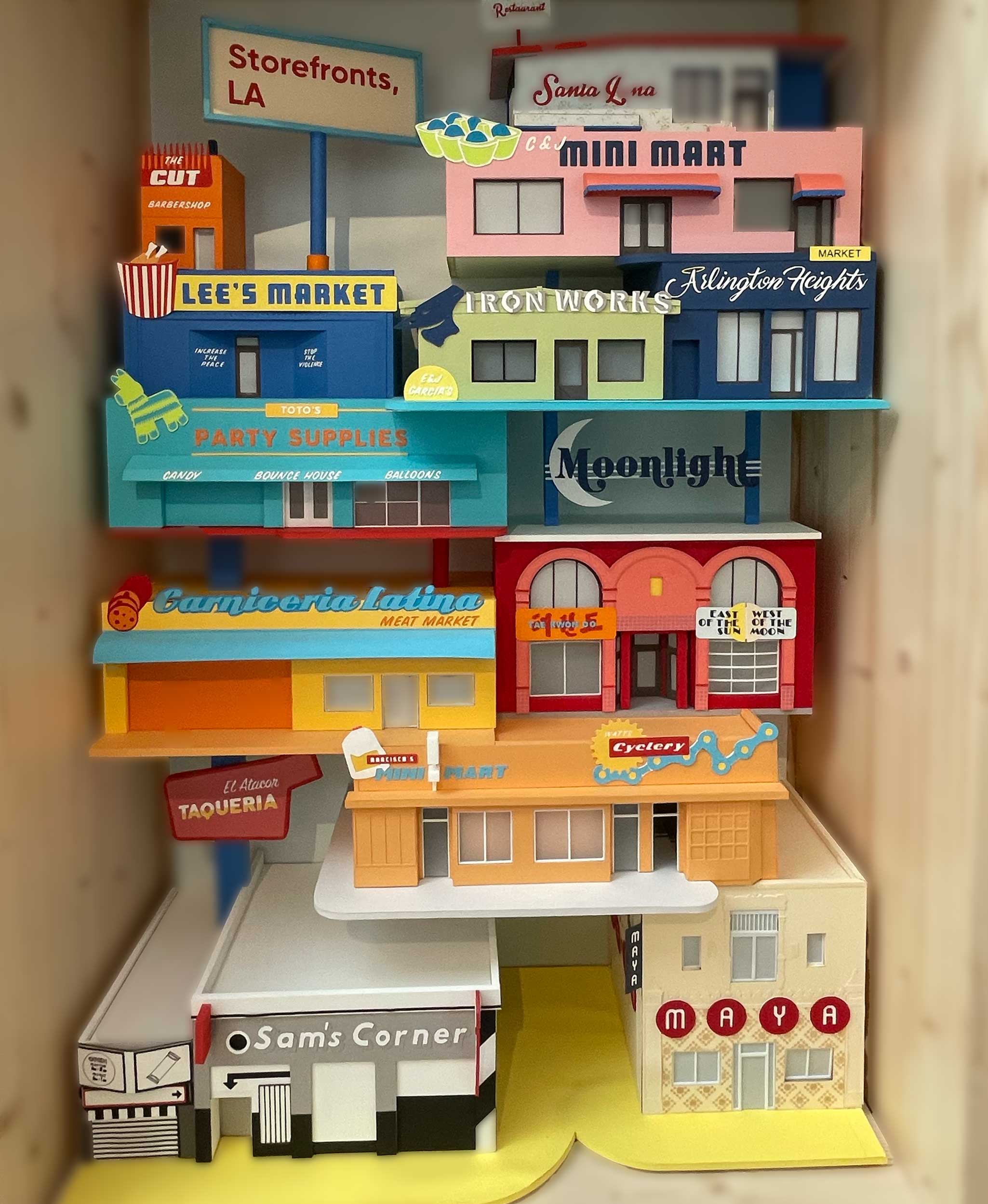 Americana at the US Pavilion
Americana at the US Pavilion
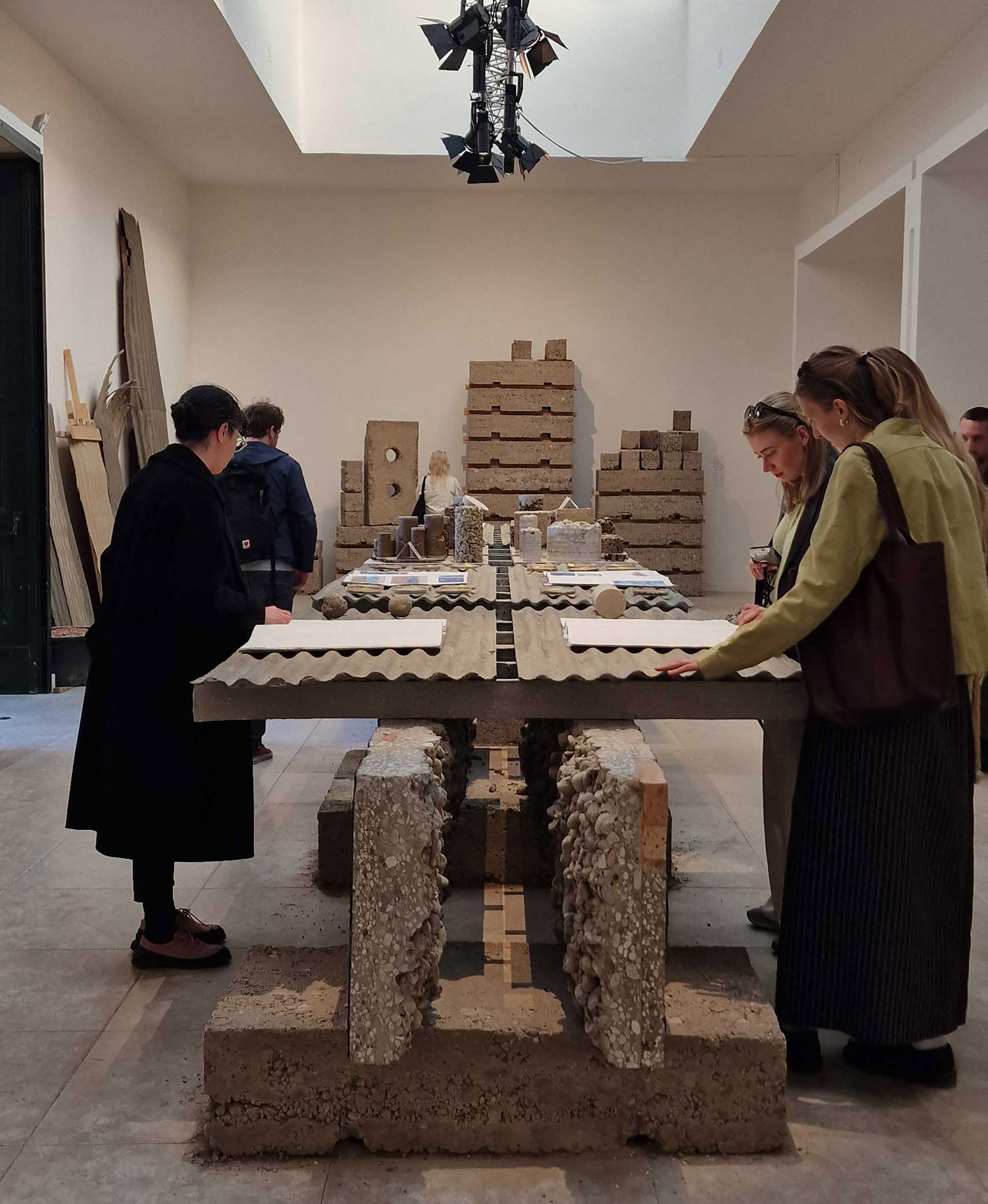 Build of Site – the Danish Pavilion
Build of Site – the Danish Pavilion
The curators of this year’s US pavilion have created a serene and welcoming atmosphere for visitors, who sprawled, lounged, chatted and even danced on a newly constructed porch encasing the existing Palladian structure. Inside, is a thoroughly researched and beautifully presented historical tour of the porch and its various roles within the nation’s built history, and its presence in American communal memory. Overall, it feels like an accidental but timely comment on the shifting State of the Union.
Several pavilions are in a state of flux: either under construction or undergoing refurbishment, prompting some very creative, temporary offerings. Notably the Danes who are giving visitors the chance to get under the skin of their pavilion, quite literally – it’s a building site, as Søren Pihlman leads a major renovation project. It’s strangely thrilling to wander around and get up so close to the core materiality of an historic pavilion, though fortunately no hard hats are required.
The French pavilion, usually one of the grander structures within the Giardini, is this year clad entirely in a scaffolding-like structure, on which is displayed many different architectural responses to various contemporary challenges, in line with the pavilion’s theme of ‘living with’.
Meanwhile, the Qataris, currently constructing the first new pavilion in the Giardini since the 1990s, are represented by Yasmine Lari’s elegant, geometric bamboo structure that speaks to Middle Eastern traditions of hospitality.
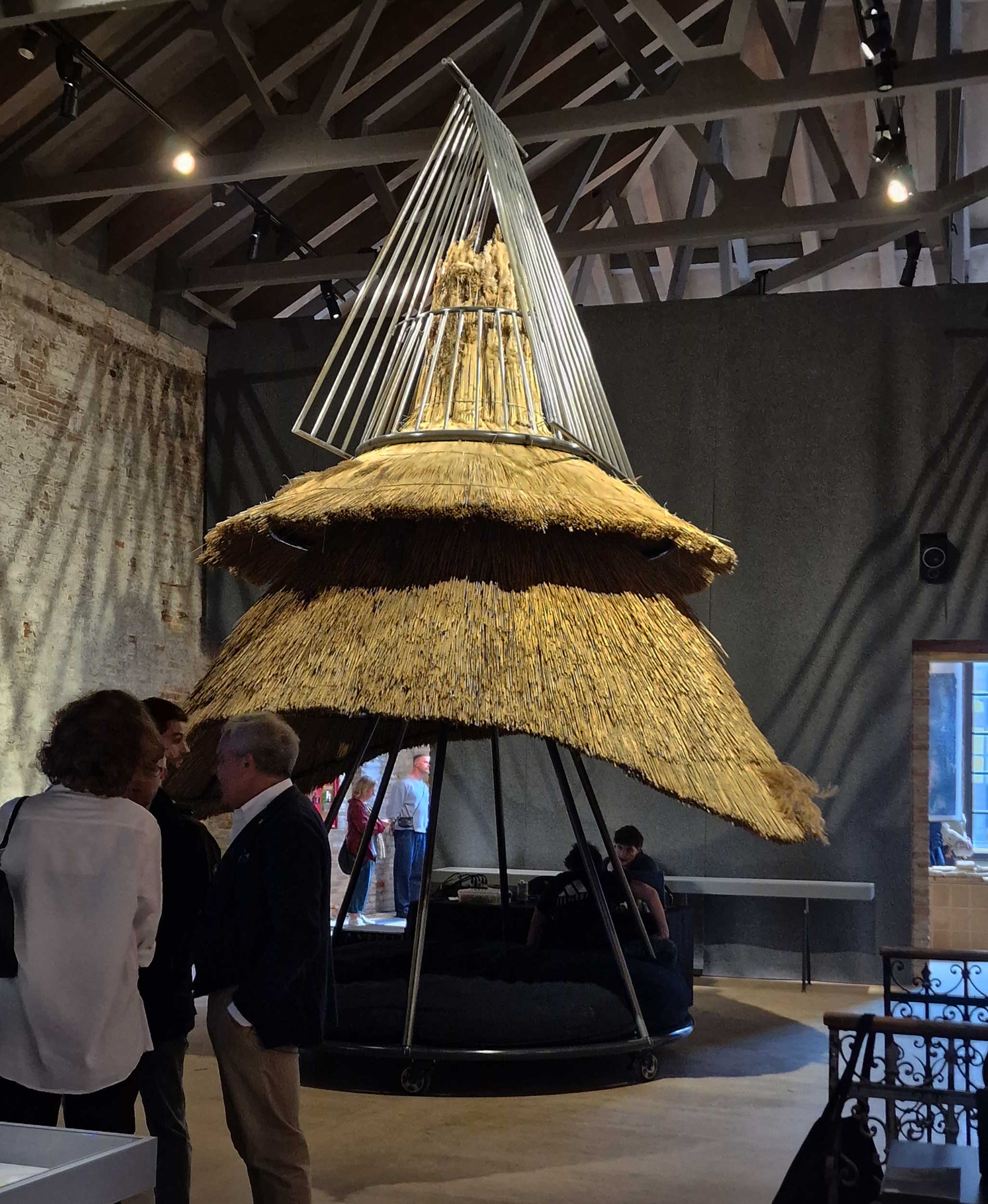 Vernacular Hardcore - the Ukrainian Pavilion
Vernacular Hardcore - the Ukrainian Pavilion
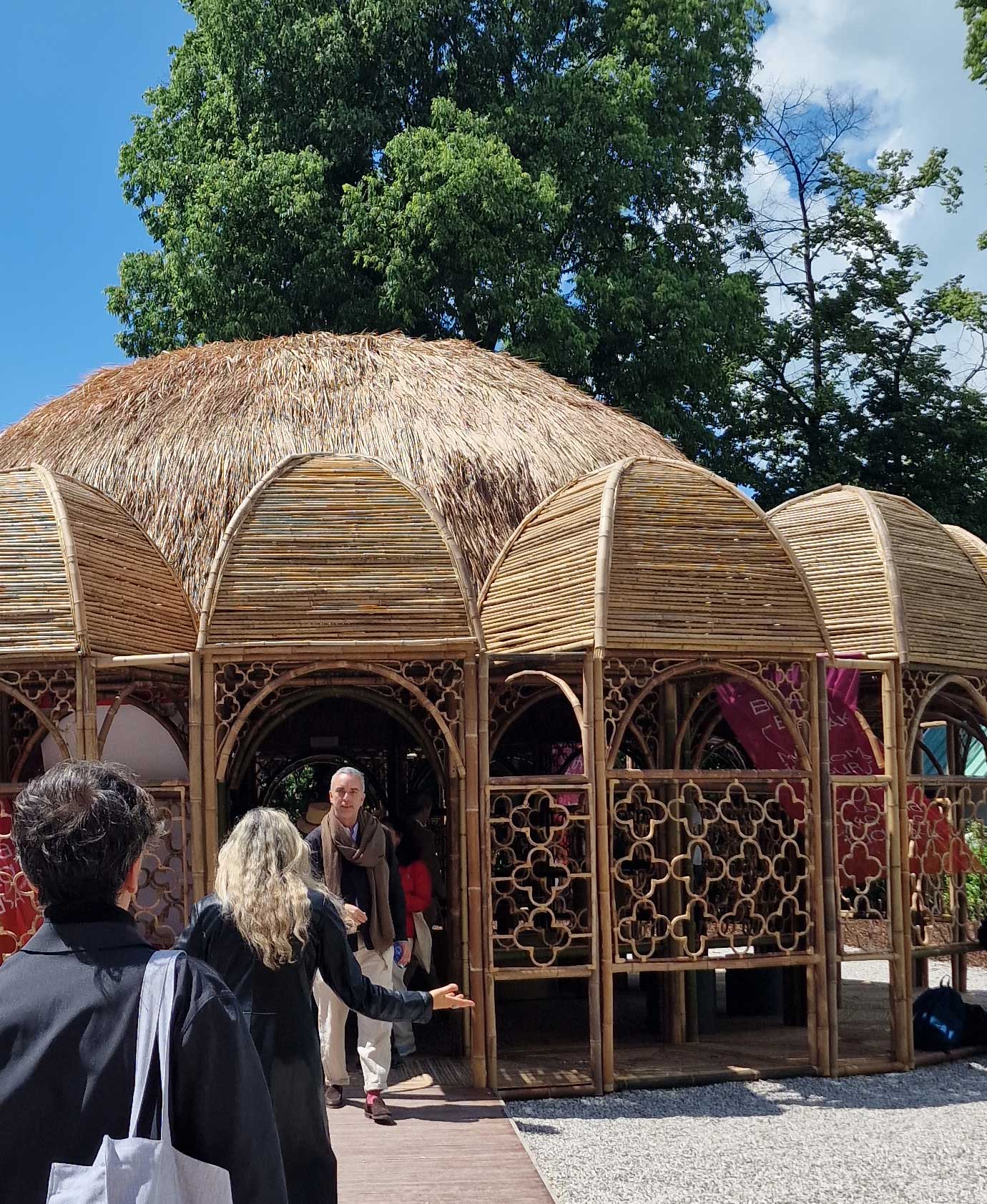 Beyti Beytak for Qatar
Beyti Beytak for Qatar
Visually delightful, both the Mexican and Moroccan pavilions find optimism for the future in methods from the past: the former looking to ancient Mesoamerican agricultural systems to ward off ecological crises and the latter marrying traditional regional craftsmanship with modern digital technologies.
At Vernacular Hardcore, the Ukrainian Pavilion, the architectural reconstruction of domestic spaces is presented as a means of resistance during wartime, while the structures of military defences are highlighted (quite literally, in fluorescent yellow) at the Latvian pavilion.
Similarly energetic and bright, the Dutch pavilion questions how architecture influences society and who is welcome in different spaces at their ‘dynamic sports bar’. It offers transformable kits, to allow for fluid identities, alongside screens showing games that contrast with traditional sporting rules.
At the Albanian pavilion, the relationship between architecture and society is also under interrogation, but this time in the context of occupation, war and dictatorship. The nation is one of Europe’s youngest democracies, and the pavilion’s curators have delved into the architecture of its past, during the communist regime when citizens were deprived of private property, and examined the present, as public space is rejected in favour of privacy and individualism. Finally, it questions Albania’s future: where everything is possible.
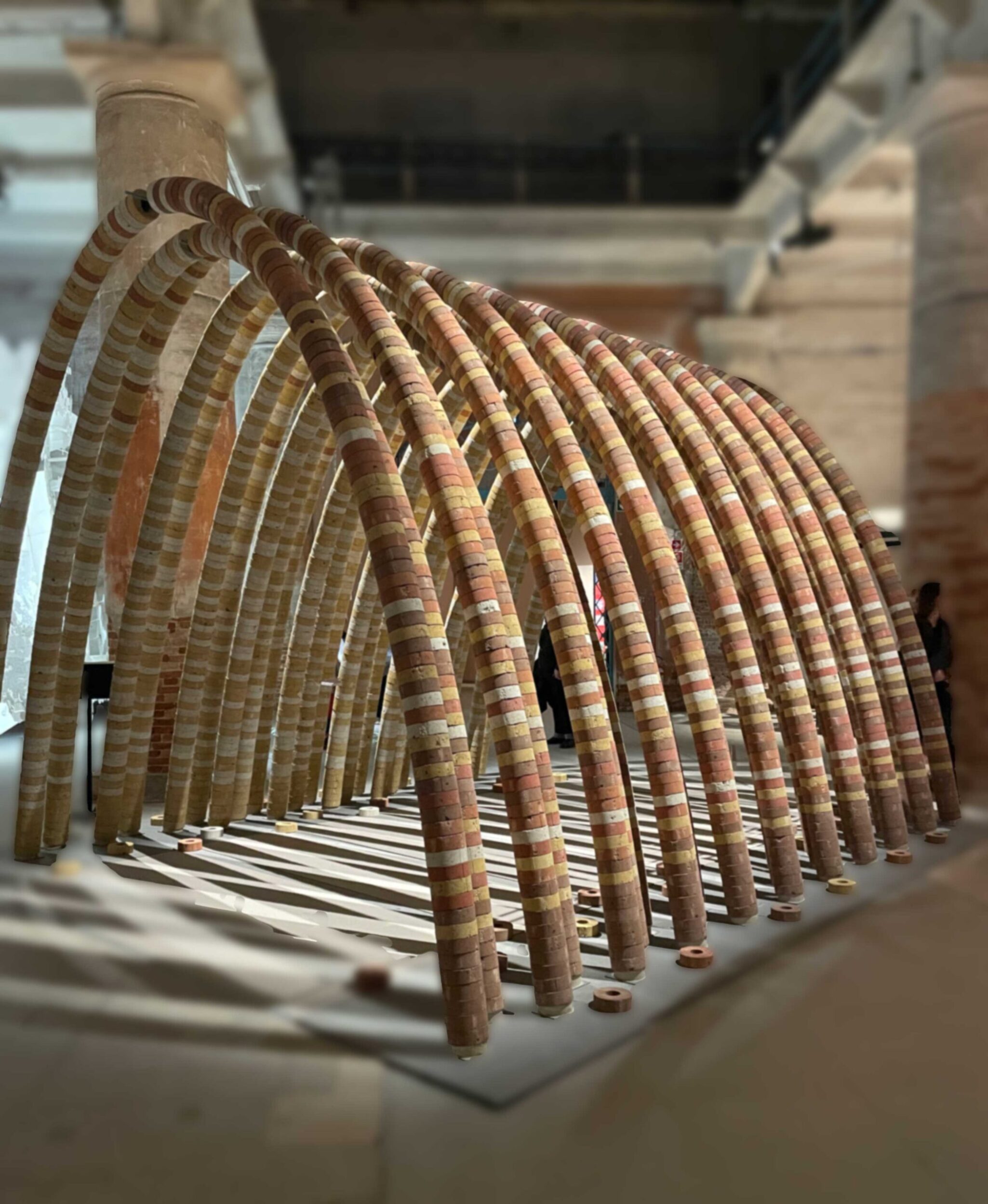 Elephant Chapel
Elephant Chapel
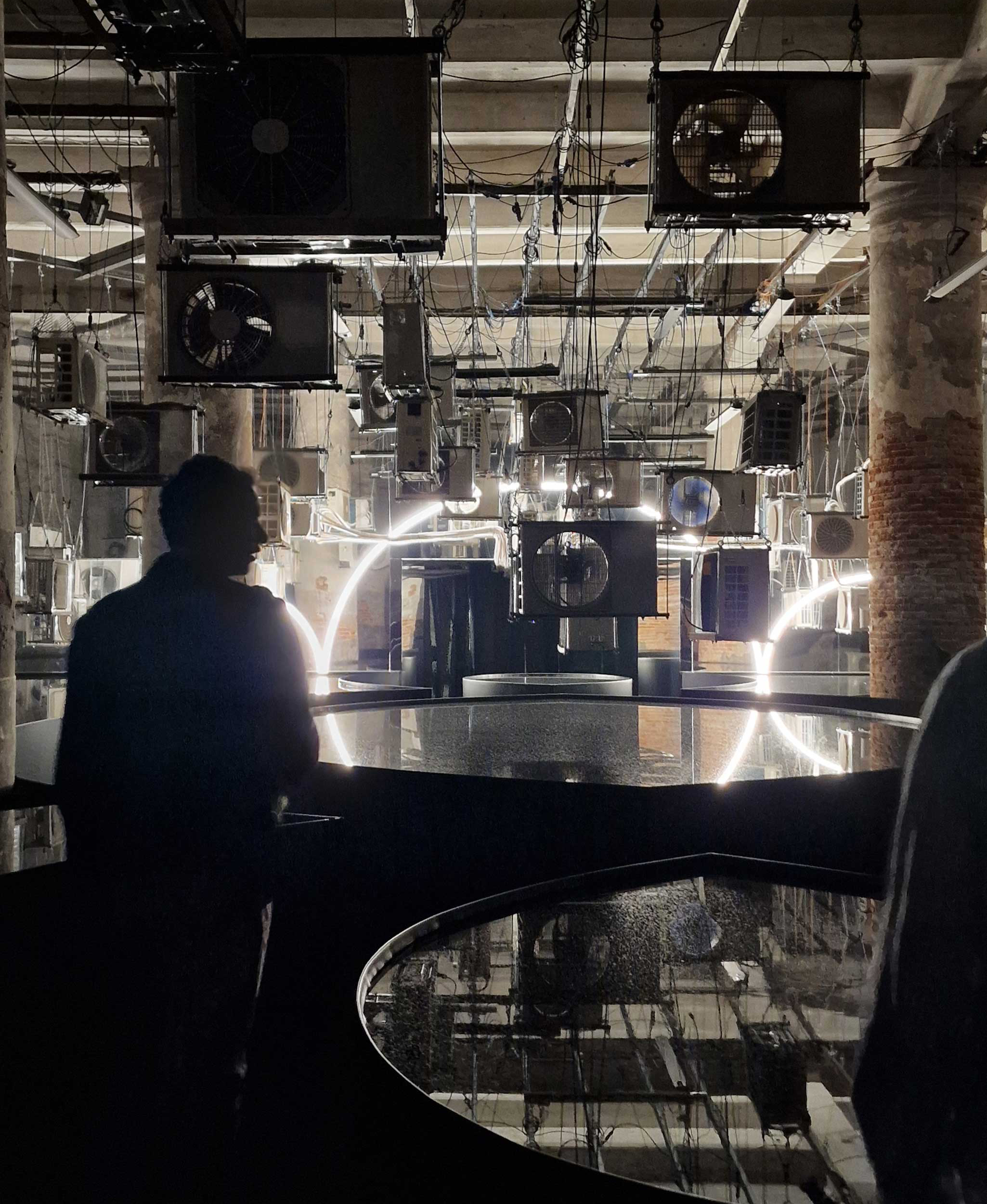 Terms and Conditions by Transsolar, Bilge Kobas, Daniel A. Barber, and Sonia Seneviratne
Terms and Conditions by Transsolar, Bilge Kobas, Daniel A. Barber, and Sonia Seneviratne
Entrance to the main exhibition is via a claustrophobic installation, entitled Terms and Conditions, which presents a physically uncomfortable, disorientating representation of the future on an ever-hotter planet. It’s an almost pitch-black room, soundtracked by stuttering, overworked air conditioning units and encased in thick, humid air. The only source of light is reflected in haphazard pools of water. The experience is tense and unpleasant – though instantly effective at setting the tone for what lies within.
Further inside the temperature drops but the senses remain overwhelmed, this time by the vast number of visuals and accompanying text. The latter is helpfully summarised by AI, but the content is often incorrect or removed of vital context, which adds to the atmosphere of confusion.
There is some great work on show, with bold statements of realistic optimism for an otherwise terrifying future. Boonserm Premthada’s elephant chapel is a large, lightweight arch constructed of what looks like retro powdered sweets but is actually brick made out of elephant dung. Continuing with the theme of purposeful reuse, Tosin Oshinowo and Oshinowo Studio artfully interrogate the lifecycle of consumer products via a set of hypnotising films of Lagosian markets, projected onto giant screens.
The 19th International Architecture Exhibition in Venice is open to visitors until Sunday 23 November 2025. Find out more
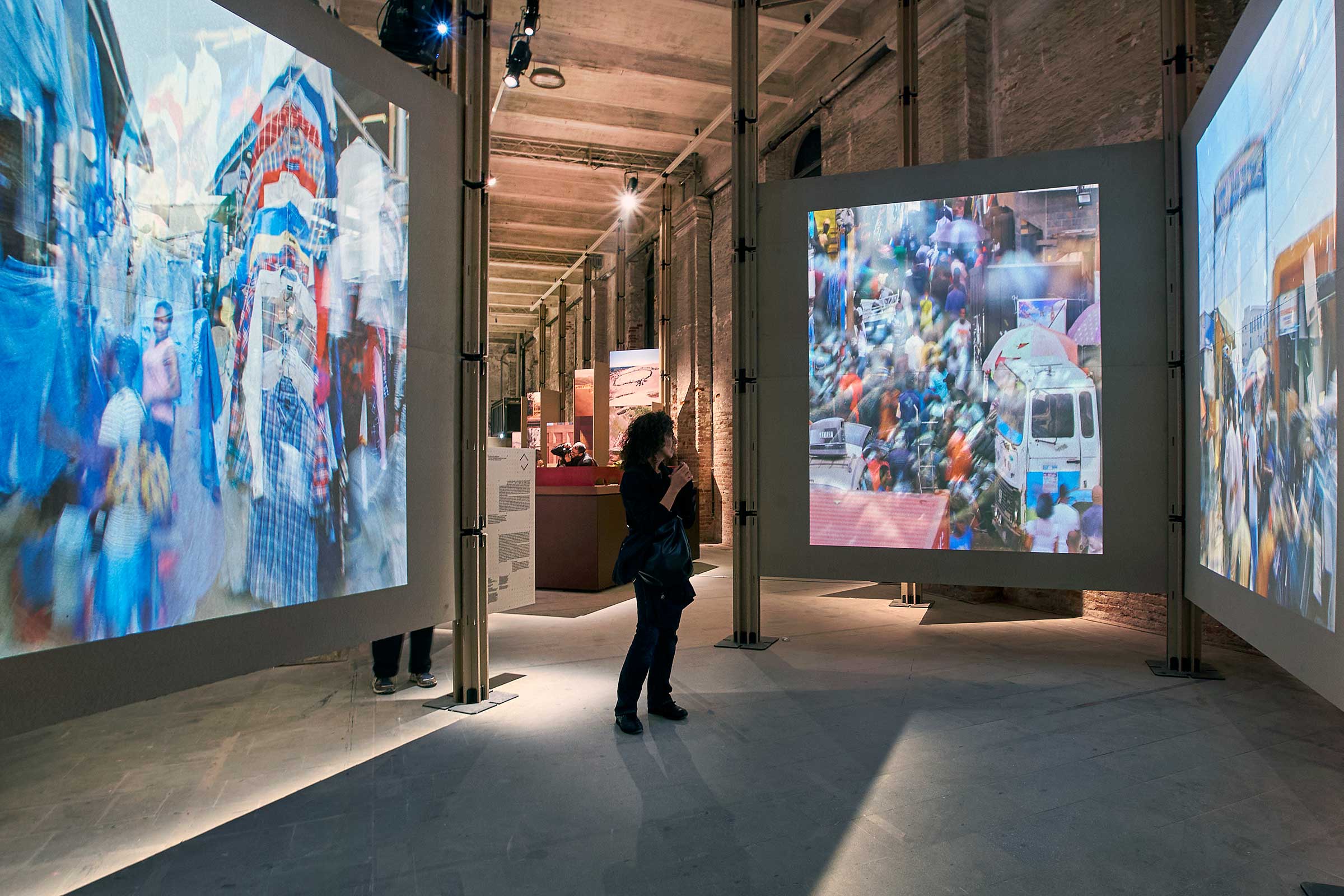 Alternative Urbanism: The Self-Organized Markets of Lagos © Paul Raftery
Alternative Urbanism: The Self-Organized Markets of Lagos © Paul Raftery